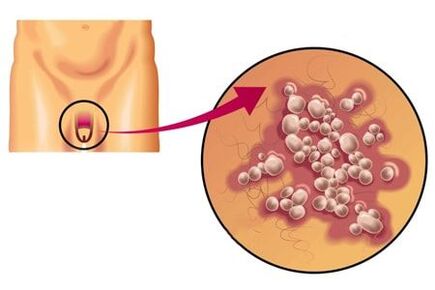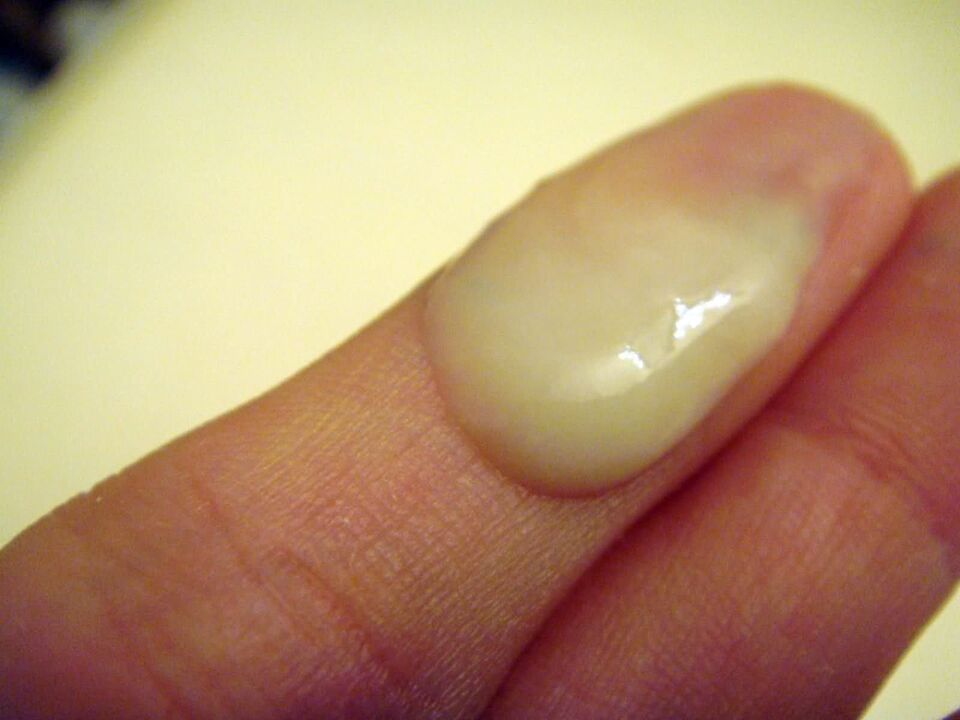Discharge from the genital organs can bother not only girls, but also men. Men have a normal odorless discharge. Their source is the urethra. In women, the discharge is called leucorrhoea. If you notice an unhealthy discharge, make an in-person appointment with a urologist immediately.
Normal or pathological?
The urethra is the male urethra. From there they appear from time to time. There is such a thing as urethrorrhea. It can be physiological or libidinal. A clear discharge appears from the exit of the urethra. This happens in the morning, immediately after waking up or when the man is sexually aroused.
Urethrorrhea can be more or less pronounced. The lubricant that is released during arousal contains semen. Therefore, if you do not want to have children yet, you should be careful even during genital foreplay. The secretion in men helps sperm to pass through the urethra and into the partner's vagina. After all, the environment there is acidic, and this is harmful to the life of the sperm.
Pathological discharge
Physiological shedding, which usually occurs in boys and men, is described above. Here we will look at shedding that is related to health problems. Mostly pathological discharge from the urethra worries menfor urethritis. This is an inflammatory process that develops in the urethra. Urethritis can be caused by infection or non-infectious factors.
Infection can be both specific and non-specific. It is mainly trichomoniasis or gonorrhea that is specific. Anonspecific urethritiscan be caused by the following pathogens:
- mycoplasma
- ureaplasma
- chlamydia
- herpes
- staphylococci
- streptococcus
Noninfectious causes of urethritisand associated discharge from the genital tract:
- trauma, narrowing of the urethra
- irritation from chemical factors
- mechanical damage to the mucous membrane
- influence of allergens
Discharge from the genital tract in men can vary in color and transparency. It depends on how active the inflammation is, at what stage it is and what flora is causing it.Separation from the penis includes::
- mucus
- liquid
- cells of different origins
If there is a lot of the last listed component, then the discharge becomes cloudy, which can be visually observed by the person himself. If epithelial cells appear in the discharge in large quantities, the discharge thickens and acquires a gray hue.
If you find yourselfyellow-green, greenish or yellowish dischargeMost likely, they contain many leukocytes. This means that the discharge contains purulent masses, which are a consequence of the inflammatory process. In the same disease, the discharge can be of different thickness, amount and character. For example, at the beginning of the disease, they can be thicker and then gradually become more liquid. This is such an individual process that during the examination the doctor will not be able to determine your illness and you will have to undergo a series of tests.
Secretion in menwhitethere can be various reasons. The first thing that doctors suspect is the spread of Candida fungus. The disease is called accordingly -. You must have heard that women suffer from thrush. It also occurs in men, but most often occurs in a hidden form. But in rare cases, a white discharge from the genitals may appear.
Odorous discharge
The first possible reason (and the most harmless) is poor hygiene. As mentioned above, smegma is a normal (not indicative of disease) male discharge. If you do not wash regularly, at least once a day, then smegma accumulates, bacteria multiply in it, causing not very pleasant smells. These smells may be different for different men.
If you follow good hygiene rules and still have an unpleasant odor, your doctor may suspect a metabolic disorder. In such cases, the most common cause is diabetes. Smegma will be released in quite large quantities, so the laundry will be wet.
Infections are also a cause of smelly discharge in men. The pathological process manifests itself mainly in the urethra. Your doctor may suspect urethritis due to a gonorrheal infection. The nature of the disposal is described above. If the discharge from the penis in men smells sour, it is most likely that urogenital candidiasis develops.
Bleeding in men
The main reason is infections. The discharge may be completely bloody or contain streaks of blood. If the infection multiplies in the urethra, then you will notice such a symptom, but not necessarily. Urethritis is mainly caused in such cases by candida, trichomonas or gonorrhoeal infection. The stronger the inflammation, the more blood is released.
The blood may be due to chronic inflammation of the urethra. The essence of the process is that the mucous membrane of the urethra loosens. If an irritant acts, the membrane is damaged and blood begins to be released. Even urination can be an irritant.
The number two likely cause is carelessly performed medical procedures. The urethra is injured, due to which blood is released. Procedures that can cause damage to the urethra:
- catheter installation
- catheter removal
- bougie
- taking a pap smear
- cystoscopy
The discharge with blood is immediate. It should be noted that in this case the blood is scarlet, without clots and stops quickly.
Passing stones and sand is the next cause of bloody penile discharge. They are excreted by the kidneys or bladder and pass through the urethra. Microliths are hard, damage the mucosa and walls of blood vessels, which becomes a direct cause of bleeding. Pain also occurs.
Ejaculation of blood with semen
Such discharge is called "hematospermia". It can be true or false. If hematospermia is false, then blood mixes with the sperm as it passes through the urethra. If this pathology is true, then the blood mixes with the sperm before it passes through the urethra.
Hematospermia is manifested by the following symptoms:(Clinical picture):
- urination disorders
- pain during ejaculation
- discomfort and pain in the lower back
- pain and/or swelling of the genitals
- high body temperature
Causes of discharge of blood with semen:
- long-term sexual abstinence
- too active sexual life (during coitus the walls of the blood vessels are torn)
- varicose veins of the pelvic organs
- stones in the testicles and vas deferens
- malignant and benign formations in the genitourinary organs
- biopsy
- genital surgery
If you notice a discharge from the genitals that does not disappear in a day or two, immediately go to a personal consultation with an experienced doctor. If discharge occurs after unprotected intercourse, there is no need to raise the alarm, but you should go to the doctor and get examined as soon as possible. Health to you and your mates!
Secretion from the genital organs in men is secretion from the urethra (urethra) and discharge
Variants of physiological secretions
Criteria for normal disposal,corresponding to the functions of the organs of the urogenital system:
Urine - transparent, straw to golden yellow in color, practically odorless, without scales or other impurities;Prostate secretion has a viscous consistency and a whitish tint, has a specific smell of semen;Ejaculate: spermatozoa from the ejaculatory duct are mixed with secretions from the Littre (urethral), Cooper (bulbourethral) glands and prostate secretion, acquiring a gray-white color and mucous consistency;Fresh smegma from the preputial glands it appears as a thick white grease; it may turn yellowish or greenish over time.
Preputial lubrication –
Urethrorrhoea, mucus, colorless dischargefrom the bulbourethral and urethral glands. They appear only in excitement related to the libido. The secretion of clear mucus is intended to lubricate the urethra and improve the passage of sperm. The amount of secretion varies from scanty to abundant, these parameters are related to the individual characteristics of the body and the frequency of sexual activity. After prolonged abstinence, the volume of excretion increases.
Emission - spontaneous release of sperm, unrelated to intercourse. It is usually seen in the morning when testosterone levels rise. It depends on the age and the intensity of sexual activity: it appears in boys at puberty, in adult men - with irregular or rare sexual contacts.
Prostatorrhea, discharge of a small amount of clear mucus from the urethrawith gray and white inclusions. It occurs after straining the abdominal muscles (for example, with constipation) or after urination. The secretion consists of a mixture of seminal fluid and secretion from the prostate; increased volume and cloudiness may be signs of prostatitis.
Pathological discharge
In men, the causes of discharge from the penis can be sexually transmitted diseases, tumors, non-specific inflammation of the urogenital organs, various injuries, medical procedures or operations.
Pathological discharge from the urethra differs from normal:
- By volume (too abundant or scarce, perhaps moderate);
- By color and transparency (from white to yellow-green, cloudy);
- Through impurities (blood, pus, lumps of mucus);
- Consistency (very runny or too thick and sticky);
- By smell (sour, putrid, fishy);
- According to the frequency of occurrence (depending on the time of day, constant or episodic discharge);
- In connection with urination, sexual excitement, drinking alcohol, hot and spicy foods.
The nature of the discharge depends on the causative agent of the disease, the state of the immune system and concomitant diseases, as well as the severity and duration of the inflammation (acute or chronic).
If there is a change in the amount, density or color of the discharge or if an unpleasant smell appears, it is recommended to consult a doctor and have tests done. There is no point in self-diagnosis, it is very difficult to correctly diagnose the disease based on only one symptom.
Penile discharge associated with sexually transmitted diseases

mucosa: transparent secretion, viscous and small in quantity, occurs in chronic form or urethritis. Microscopy reveals a moderate number of leukocytes in the discharge (the norm is up to 4 cells per field of view).
Mucopurulent: white discharge, translucent; observed in the acute phase of chlamydia, ureaplasmosis and mycoplasmosis. With a chlamydial infection, they accumulate on the head of the penis, as if "sticking" to the skin.

Purulent discharge, having an unpleasant smell, are characteristic of. They are sticky, thick, yellow or greenish in color and have a putrid smell. Under microscopy, epithelial cells from the urethra and numerous leukocytes are visible in the material.
Symptoms accompanying gonorrheal urethritis: constant and profuse discharge; especially strong when urinating.
In sexually transmitted diseases, combined infections combining several pathogens at once are often observed. Gonorrhea and are accompanied by chlamydia, mycoplasmosis and ureaplasmosis usually occur "in pairs". The symptoms of such diseases differ from the classic manifestations, the discharge from the urethra can also acquire a completely different character. Therefore, modern analytical techniques with a high degree of reliability are used for a final diagnosis, and not the characteristics of the secretions.
Non-specific (non-venereal) inflammation
The cause of the non-specific inflammation is the patient's own microflora, which is classified as opportunistic and is activated only in case of problems with the body's immune defenses. Streptococci and staphylococci, fungi of the genus
A secretion that is not associated with inflammation

Spermatorrhea - discharge in the form of passively flowing semen,occur outside of intercourse or masturbation, without feeling orgasmic. The causes are some diseases of the nervous system, spinal injuries, chronic stress and any prolonged inflammation of the genital area. Spermatorrhea is associated with impaired innervation and reduced tone of the vas deferens.
hematorrhea,bloody questions. It often occurs with injuries of the urethral canal received during
The discharge is brown, with clots of blood or mucus mixed with pus, occur in malignant tumors originating in the prostate, urethra, or bladder. During the healing of mucosal wounds, a brownish mucus may form, which is released in polyposis of the urethra and/or bladder.
prostatorrhea- secretion of the prostate gland flowing from the urethra. Occurs in chronic prostatitis, prostate adenoma, disturbed innervation (
Research algorithm for the presence of pathological secretion from the penis

- Inspection of the perineum, penis, foreskin and glans.The purpose is to identify deformations of the genital organs, traces of injury, signs of external inflammation, discharge, rash, etc. Traces of discharge are sometimes noticed on underwear.
- Palpation of the inguinal lymph nodes, assessment of their condition:size, whether they are hotter or colder than the surrounding tissue, painful or not, soft or firm, movable or stuck to the skin, whether there are ulcers on them.
- Digital prostate examination;massage the prostate through the rectum and collect secretions for microscopic examination. Before the massage, it is recommended to refrain from urinating for 1-2 hours. In prostate adenoma, its lobes are enlarged approximately equally, dense connections are palpable. Irregular growths and their consistency are typical of a malignant tumor, during palpation of the prostate, blood with clots can be released from the urethra.
- Material - for microscopy.When examined under a microscope, the stained smear reveals blood cells, epithelium, sperm, fatty inclusions and some pathogens (Escherichia coli, gonococci, gardnerella, yeast).
Increased white blood cell count characteristic of acute urethritis or exacerbation of chronic inflammation,eosinophils – in urethritis with allergies.red blood cells occurs in severe inflammations, tumors, injuries of the genitourinary organs and urolithiasis.A large amount of epithelium – sign of chronic urethritis, urethral leukoplakia. When spermatorrhoea is detected in a Pap smearspermatozoa , with urethrorrhea –mucus , simpler -lipid granules . - General clinical blood test,
blood for sugar - in the morning, on an empty stomach.Detailed urinalysis (morning portion, immediately after sleep). - Ultrasound of the prostate, bladder and kidneys; CT scan and urography.
If the manifestations of genital inflammation are severe, then before receiving the test results, the patient is immediately prescribed broad-spectrum antibiotics. In case of severe bleeding, hospitalization and active measures to stop the bleeding are indicated. The suspicion of a malignant tumor can be confirmed only by the result of a biopsy, the final diagnosis is made on the basis of histological examination.
Important:
- Penile discharge is only one symptom that cannot be used as a guide in making a diagnosis.
- unacceptableindependent prescribing of drugs. drugs, even if the manifestations seem obvious to a certain disease.

Normal amount of mucus
The volume of preejaculate directly depends on the degree of arousal of the person. Maximum concentration is achieved with strong sexual desire.The normal amount of fluid is 5 ml.
Some representatives of the stronger sex are physiologically unable to secrete lubricant. Lack of pre-ejaculation during erection reduces the ability to conceive.
Healthy preejaculate has the following characteristics:
The pre-seed performs cleaning functions, so its consistency can be changed. A man may experience clouding of the lubricant during repeated intercourse, lack of hygiene or before ejaculation. It will return to normal in 1-2 days. Otherwise, the development of a pathogenic process should be suspected.

Signs of deviation from the norm
Pathological discharge of mucus in men differs from healthy ones in color, smell and consistency. They are almost always accompanied by unpleasant sensations.
Symptoms indicating deviation of the lubricant from the norm:
These signs are characteristic of pathological processes indicating the development of diseases.
Unhealthy discharge in men is divided into types:
| Type | Description |
|---|---|
| spermatorrhoea | Random ejaculation of semen without reaching orgasm. The reason for the process is reduced muscle tone of the vas deferens. Pathology develops due to chronic inflammation |
| hematorrhea | Leaking lubricant mixed with blood. Appears with injuries of the urethral mucosa |
| Leukocytic urethrorrhea | The exudative phase of the inflammatory process as a result of thermal, mechanical, chemical or viral damage to the urethral mucosa |
| Mucopurulent | They consist of a small number of leukocytes, serous fluid and glandular secretions. This mucus is characterized by active formation at night. A person notices discharge of pus in the morning, and yellow spots can be found on his underwear. Mucopurulent discharge occurs when the urethra is damaged by bacteria: trichomonas, ureamycoplasma, chlamydia |
| Purulent | These include a large number of leukocytes, urethral epithelium, mucus and serous fluid. They have a thick consistency and an unpleasant smell. They appear in the form of drops with a yellow or greenish tint. Evidence for the development of gonococcal urethritis, which is formed against the background of chlamydia and gonorrhea |
The volume of mucus released can be copious or small. Bad lubrication can be quite difficult to spot. To do this, you need to press the urethra so that the liquid comes out of the opening. It dries quickly, forming a film on the membrane of the head of the penis. The viscous consistency causes the urethral fungi to stick together.

Causes of pathological discharge
Lubrication secretion that differs from the norm is in most cases due to sexually transmitted diseases, but there are also a number of other conditions.
Sexually transmitted diseases
If a pathological discharge with unpleasant symptoms appears, the development of sexually transmitted diseases (STDs) should be suspected. Such diseases develop under the influence of unfavorable microflora, which settles on the mucous membrane of the urethra, external areas and cavities of the genital organs, as well as in the glands.
What changes indicate the disease
Various changes in pre-ejaculate indicators are cause for concern. The reasons for an immediate visit to a specialist are:
- A change in the color of the liquid - it can be grayish, with a green or yellow tint (which indicates the presence of purulent content).
- Blood impurities.
- Cloudiness.
- A curd-like consistency.
- Unpleasant musty smell.
These signs indicate an inflammatory process. The following symptoms often occur:
- Pain in the lower abdomen.
- Frequent urge to go to the toilet.
- Heat.
- Hyperemia of skin areas.
- The appearance of purulent discharge from the urethra at rest (in the absence of sexual arousal).
Mucus can be released from the urethra with the development of postoperative complications during surgical operations on the prostate and other organs of the genitourinary system.
The release of a clear liquid in the absence of an erection is one of the symptoms of pathology, the causative agents of which are streptococci, staphylococci and E. coli. A similar situation is observed when contracting sexually transmitted infections. In such cases, keep in mind:
- Hyperemia of the external reproductive organs.
- Sensation of itching in the penis and scrotum.
- Swelling of the lower limbs.
If a man notices cheesy inclusions in the preejaculate, he should urgently consult a qualified doctor, as this indicates the presence of candidiasis. This inflammatory disease is caused by fungi of the genus Candida, which are opportunistic microflora. Under normal conditions, they exist in the body without causing harm. The action of negative external factors and weakened immunity contribute to the rapid reproduction of fungi and their transition into a pathogenic form.
Few sperm are found in the preejaculate, making conception possible. Therefore, if the couple is not planning pregnancy, they should take birth control pills or protect themselves in some other way not only during intercourse, but also during foreplay.
Other reasons
The prostate gland plays a key role in sperm production. It produces a secretion without which the seminal fluid loses its functionality. When the prostate becomes inflamed, its production increases.
Men suffering from chronic prostatitis may notice that when they are aroused, a copious amount of lubricant comes out of the opening of the urethra. It is a prostatic secretion that bears quite a resemblance to preejaculate.
Excessive discharge during excitement can occur with the development of various inflammatory processes.
After probing, the appearance of transparent mucus from the urethra can be observed. This liquid is formed as a protective reaction of the body to the resulting microtraumas on the surface of the mucous membrane.
A copious amount of clear discharge during ejaculation may indicate the development of infertility.
To diagnose pathologies, not only the visual nature of the fluid, but also its biological composition is taken into account. The man should go to the doctor for an examination.

























